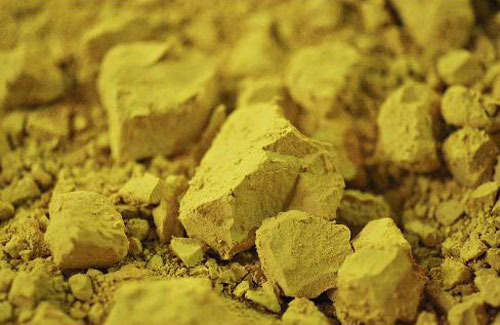
According to insiders, China National Nuclear Corporation (hereinafter referred to as CNNC)'s acquisition of Australian Paladin Energy Co., Ltd. (hereinafter referred to as Paladin Energy) uranium ore stake is expected to be approved by the National Development and Reform Commission in mid-April.
On January 20, 2014, China National Nuclear Corporation and Paladin Energy reached a value of US$190 million in transactions. China National Nuclear acquired its 25% stake in the Langer Heinrich uranium mine in Namibia and paid up to US$20 million to the latter. The non-refundable deposit.
The Lanjer Heinrich uranium mine is the second largest uranium mine in Namibia. If the acquisition is successful, China National Nuclear Corporation will be able to preferentially lock the uranium output by 1/4 of the mainstream price of the spot market, or purchase a multi-uranium mine at a long price.
"The depressed market environment has made many international uranium companies face enormous financial pressure. This is undoubtedly a rare opportunity for buyers," said Xiong Yun, managing director of Hopu Foundation.
Uranium price bottom
Since the Fukushima nuclear accident in Japan in 2011, the global uranium market price has continued to fall, falling from the highest US$72 per pound to US$35, a drop of more than 50%.
Affected by this, Paladin Energy's stock price also fell from the current high of 5.36 Australian dollars per share to the current 0.52 Australian dollars, the company's market value has shrunk dramatically.
Paladin Energy is one of the top ten uranium mining companies in the world and is listed on stock exchanges in Australia, Canada and Namibia.
Paladin Energy's 2013 annual report showed that after-tax net loss for the year was as high as US$ 420.9 million, and its cash flow was already as low as US$ 3 million. In addition, Paladin Energy will face up to 574 million U.S. dollars convertible bonds due to expire in the next 3 years.
Paladin Energy hopes to sell its equity in order to ease the tight funding situation. The plan to transfer part of the equity of the Langhe Heinrich uranium mine in Namibia started as early as 2012, but the transaction failed because the price was too high to reach agreement with the buyer.
However, Paladin Energy did not give up the above sale plan. In August 2013, Paladin Energy announced once again that it is approaching two nuclear power companies, including China National Nuclear Corporation, to negotiate the sale of part of the shares of the Lanjer-Heinrich uranium mine. As the global uranium prices continue to slump, the situation is clearly more favorable to the buying company.
Not only that, Paladin Energy also suspended project development. In mid-February 2014, Paladin Energy announced that it would suspend the operation of the kayelekera uranium mine in Malawi, and stated that the project will remain in maintenance until the uranium price rebounds and the production resumes profits.
According to Paladin Energy's estimates, the market value of the Langer-Heinrich uranium mine is around $900 million to $1.1 billion, which is equivalent to the current purchase price of China National Nuclear Corporation. The total purchase price is about $760 million. Paladin Energy's CEO John Boushov said that CNNC's offer has been the highest bid received in 2013.
It is not just Chinese companies that take advantage of timing opportunities. M&A activities of other transnational uranium companies are also very active.
In 2012, Rio Tinto won the competition with Canada's Mining Energy Company and succeeded in bringing Canada’s Hassel Exploration Company into its business; Denison Mining also included fission energy companies.
China’s uranium resources are poor. Although a large-scale uranium deposit was discovered in central Inner Mongolia in 2012, it still cannot change the shortage of uranium resources in China in the short term. In order to open up overseas markets, the footprint of China's nuclear power companies has long been in the uranium countries and regions such as Namibia, Niger, Mongolia, Kazakhstan, Uzbekistan, Canada and Australia.
Compared with international competitors, Chinese companies are obviously at a disadvantage both in uranium exploration, mining technology and access to resources. Half of the world's uranium production is concentrated in the hands of Canadian mining energy company, Areva Group and Kazakhstan National Atomic Energy Corporation. The world's top ten uranium mining companies account for nearly 87% of the world's total uranium output.
The market just needed
According to statistics, China’s nuclear power generating units currently operating, under construction, and approved, and that have been approved, have a total installed capacity of more than 72 million kilowatts. Apart from the 17 nuclear power generating units in operation, 29 nuclear power generating units have started construction. With an installed capacity of 31.66 million kilowatts, it is expected to start production around 2015.
Compared to the restarted coastal nuclear power plants, the uranium demand for China's inland nuclear power will be even greater. Of the more than 40 preliminarily researchable nuclear power projects that have been reviewed by the National Development and Reform Commission, inland projects have occupied half of the country's total. Hubei, Hunan, Jiangxi, Sichuan, Chongqing, Henan, Heilongjiang and Jilin provinces are all building nuclear power plants.
In October 2012, the “Nuclear Power Safety Plan (2011-2020)†discussed at the executive meeting of the State Council made it clear that no inland nuclear power will be restarted during the “12th Five-Year Plan†period. In January 2014, the National Energy Administration issued the “Guidelines for Energy Work in 2014†and proposed that “protection of nuclear power plant sites in inland areas†should be done. During the two sessions of the National People's Congress in March 2014, Wang Shumin, the deputy director of the National Energy Agency, publicly stated that coastal nuclear power plants will be the first to start, and inland nuclear power plants will be included in the next five-year plan.
The latest signals are seen by the industry as positive indications of the intrusion of inland nuclear power. The industry expects that the construction of inland nuclear power will come in the middle of the “13th Five-Year Plan†period, which means that China’s nuclear power demand for uranium resources will continue to increase.
According to data from the World Nuclear Energy Association and the International Energy Agency, the total installed nuclear power capacity in China is expected to reach 130 million kilowatts by 2030. From this estimate, China’s cumulative uranium demand during 2010-2030 will reach 284,000 tons. .
An investment banker from France said: "Uranium resources as a highly sensitive strategic resource, the consideration of political risks in the investment process can not be ignored." The recovery of uranium ore market demand is coming. It takes at least five years for a uranium mine to enter normal production. Due to the continued low price of uranium ore, many uranium companies have chosen to postpone or even shut down projects under construction to wait for uranium ore prices to rise again.
The 20-year Russian-U.S. high-enriched uranium agreement signed in 1993 between Russia and the US expired at the end of 2013, and Japan’s resumption of nuclear energy will all be the major factor in promoting the recovery of uranium ore prices in the short term. The increasing number of newly built nuclear reactors in the world will also be the driving force for the rise of uranium prices for a long time. At present, 72 nuclear reactors in 13 countries around the world are under construction. Industry experts predict that 62 nuclear reactors will be completed by 2016. Among them, China is the country with the largest number of nuclear power plants under construction.
A drone, from parts to perfect machine, we need to carefully assebmly, Tuning and testing. We need some small tools to help us get it done. These are some screws, tape, Vary wire, DuPont wire, 3M tape, switchboard and more. They make the whole process easier, faster and more beautiful. We can supply those parts at one station, and perhaps help you find the products you need.

Drone Assembly Tools, Drone Parts, Battery Strape, Double Side Tape
shenzhen GC Electronics Co.,Ltd. , https://www.jmrdrone.com
